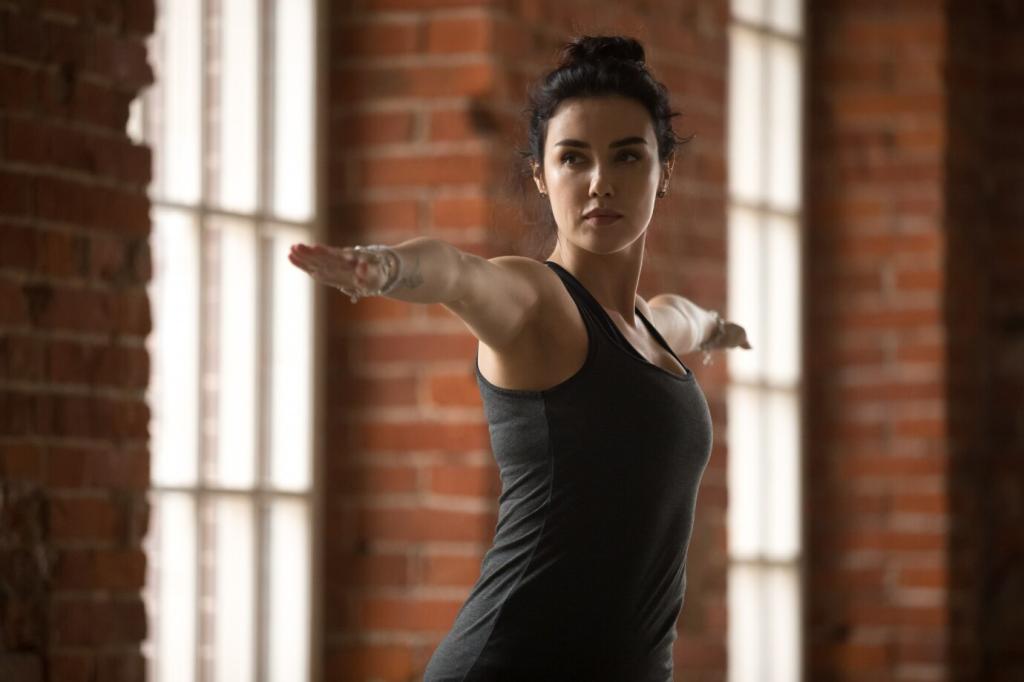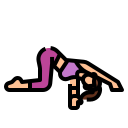Improving Balance and Coordination through Yoga
The Science of Balance: Why Yoga Works
Proprioception lets you feel where your limbs are without looking. Yoga refines this by asking for precise joint alignment, slow transitions, and mindful stillness. Share in the comments which pose most wakes up your feet and ankles.
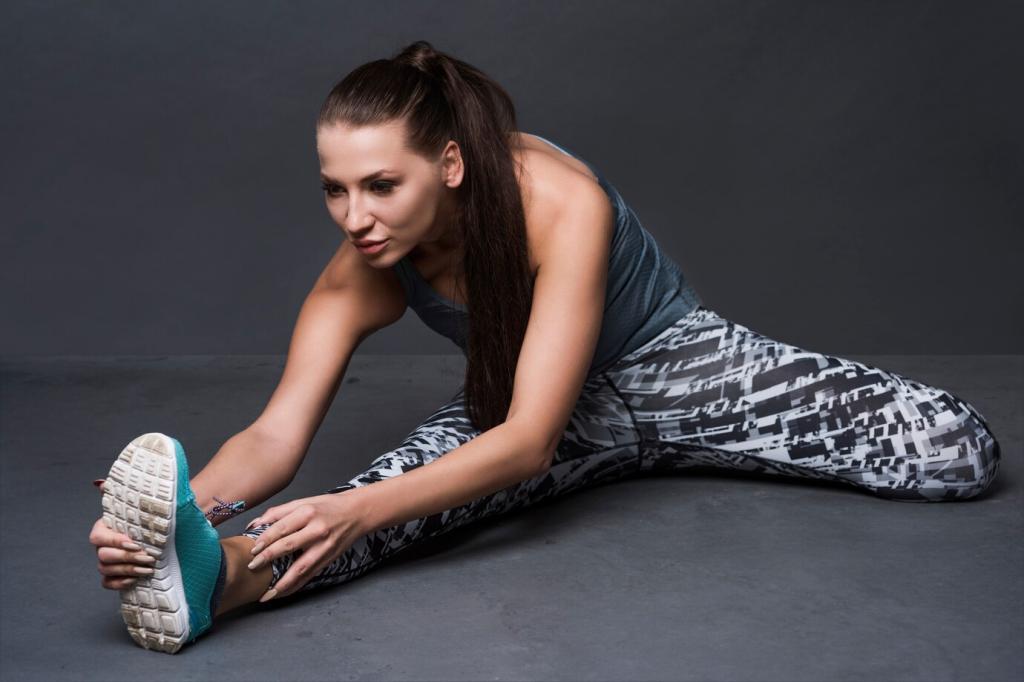
Foundational Poses to Build Steadiness
Stand tall, soften knees, and root your tripod feet. Subtly engage glutes and low belly while lengthening through the crown. Comment after three rounds: did your breath help your balance feel calmer and more grounded?
Foundational Poses to Build Steadiness
Place the foot at ankle or thigh, never the knee. Imagine your standing leg corkscrewing into the ground. Grow branches with your arms. If you wobble, smile—every small sway teaches coordination. Tag a friend to practice with you.
Foundational Poses to Build Steadiness
Hinge from the hips, elongate spine, and use blocks or a wall to find length before lift. Keep hips level, toes down on the raised leg. Share a photo of your setup and follow for progressive cues each week.
Coordination through Flow and Cross-Patterning
Contralateral Sun Salutations
Add cross-body reaches to simple flows: right knee lifts, left elbow taps; switch on exhale. This playful tweak boosts coordination and concentration. Try three cycles and tell us which side felt smoother and why.
Balance Transitions between Poses
Move from Tree to Warrior III and back, like a slow metronome. Keep breath steady and steps purposeful. Practicing transitions trains real-life stability. Drop a note about where you felt most challenged today.
Seated Core Patterns for Precision
From a tall seat, alternate extending opposite arm and leg, maintaining neutral spine. Light core engagement enhances limb control. Repeat for time, not speed. Subscribe for a printable coordination sequence you can do anywhere.
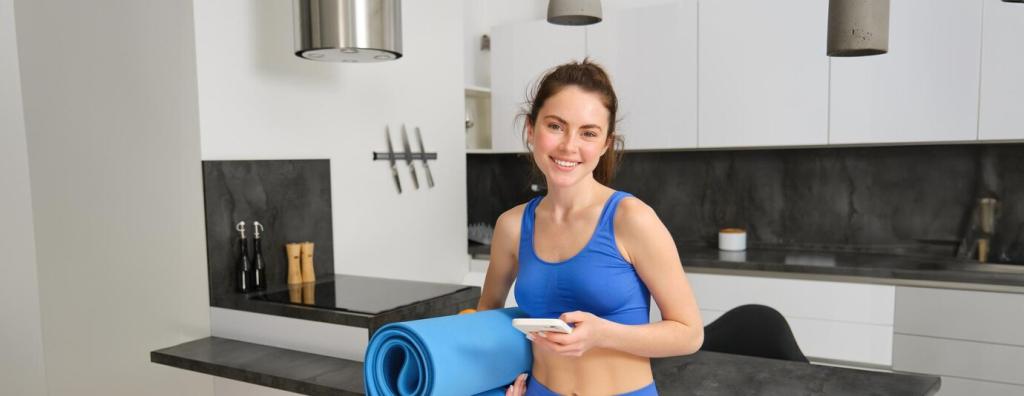
Breath, Drishti, and a Steady Nervous System
Box Breathing before Balancing
Inhale four, hold four, exhale four, hold four—repeat three rounds. This simple rhythm steadies the heart and hands. Try it before Half Moon Pose, then share whether your first attempt felt more relaxed and controlled.
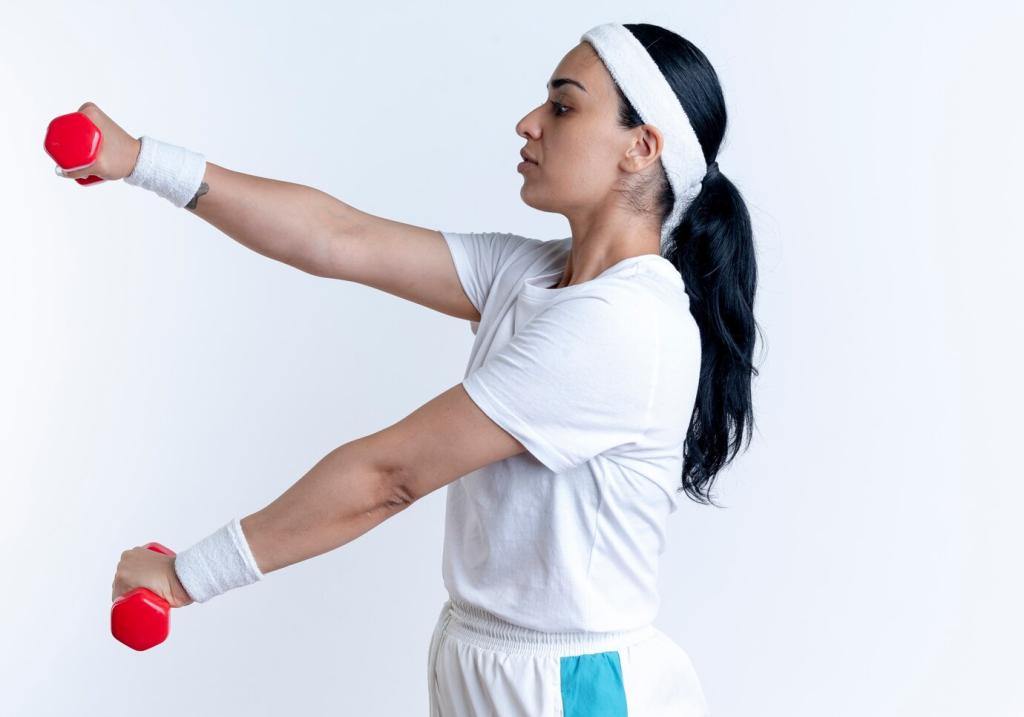
Strengthening the Stabilizers: Feet, Ankles, Hips, Core
Practice foot doming, towel scrunches, and slow heel raises with deliberate control. Strong intrinsic foot muscles improve your tripod and reduce sway. Try daily, then report back on your Tree Pose after two weeks.
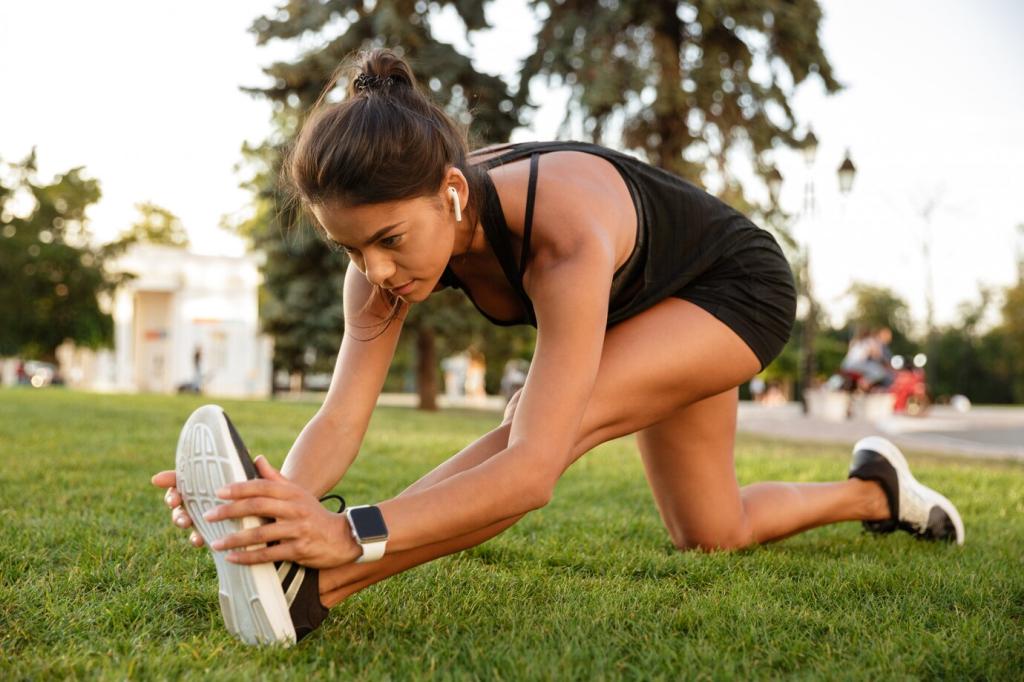
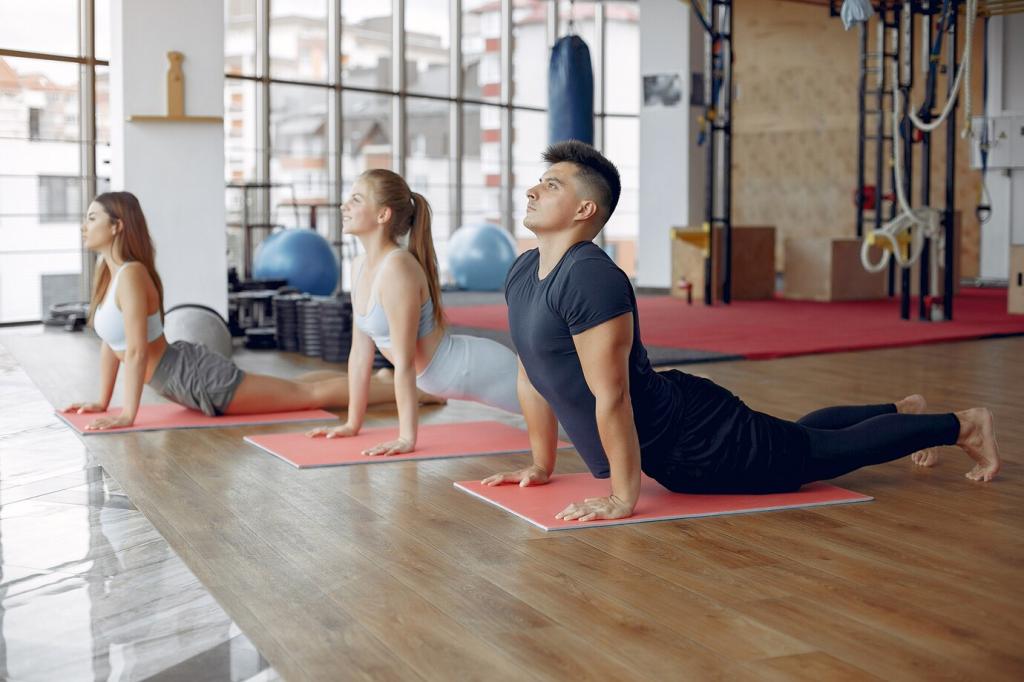
Strengthening the Stabilizers: Feet, Ankles, Hips, Core
Use a looped band for gentle inversion and eversion, then calf raises with pauses at the top. Controlled tempo builds endurance. Share your favorite ankle drill and follow for a progressive four-week strength plan.
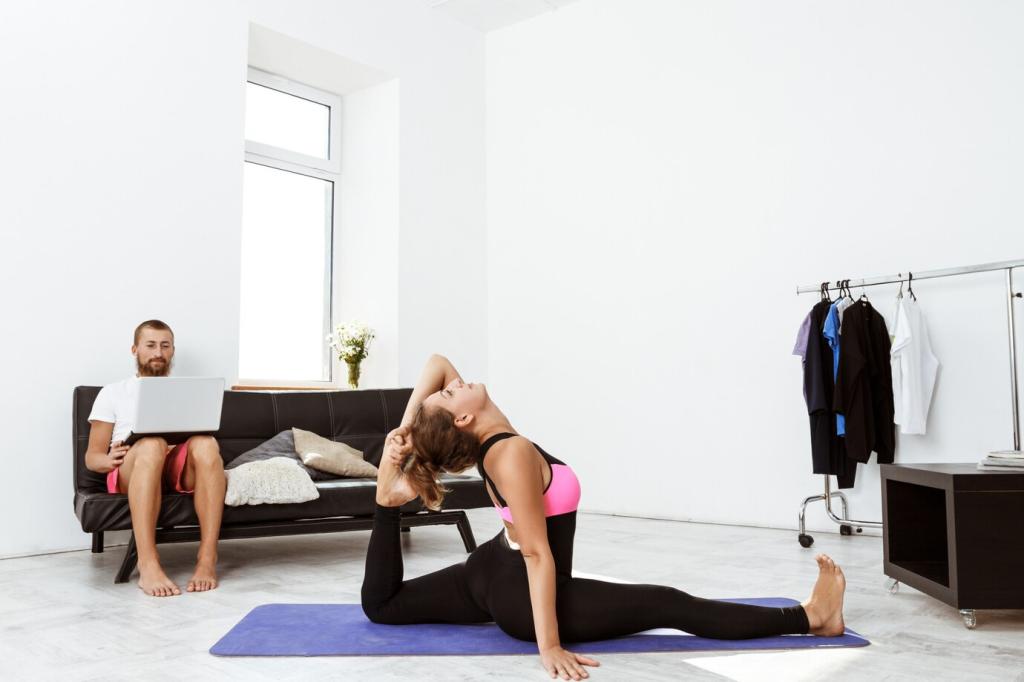
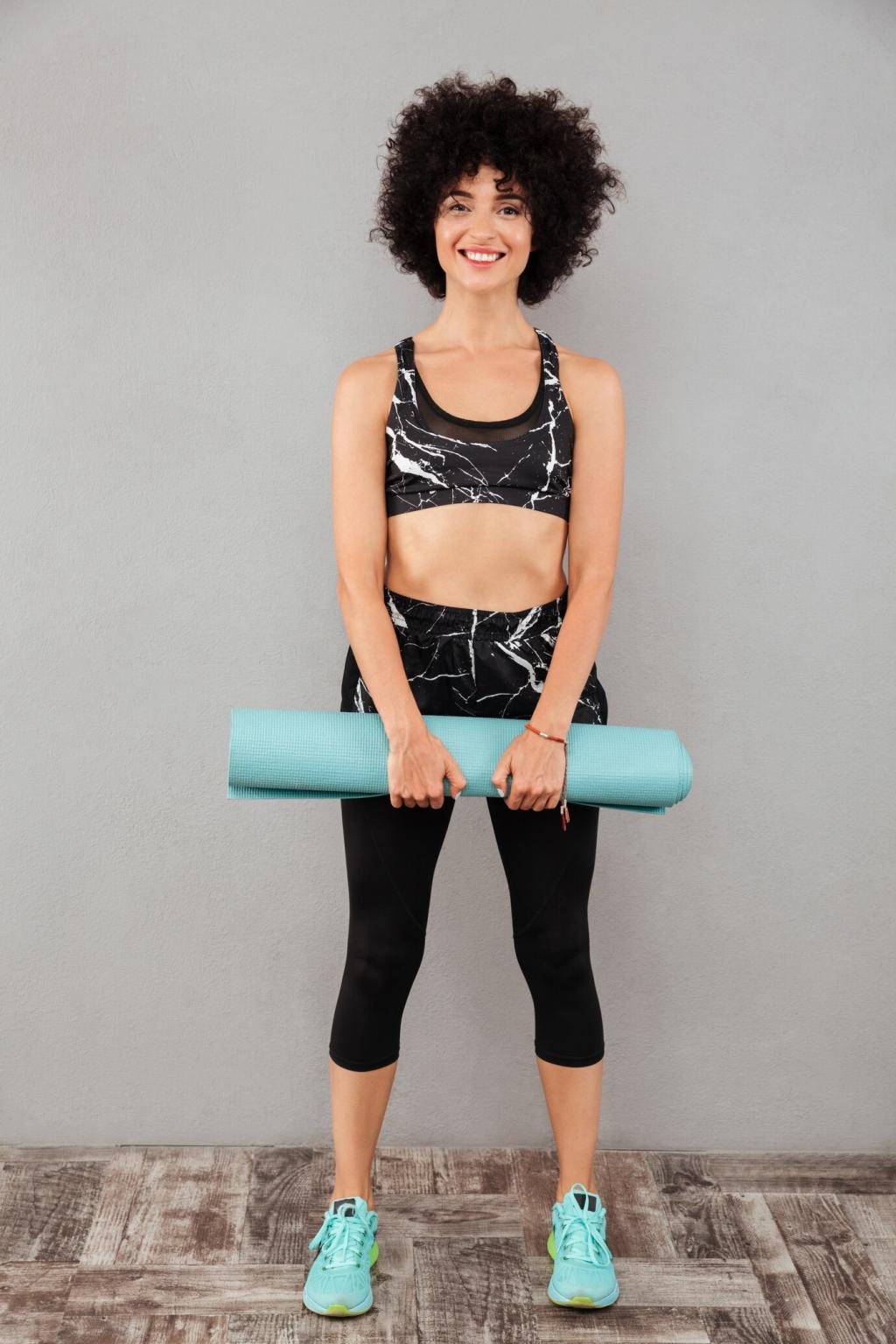
Progressions, Props, and Playful Challenges
Start with fingertips on the wall, then hover one finger, then none. Keep your breath soft. Celebrate small wins. Comment with your timeline from supported Tree to steady, freestanding balance.
Progressions, Props, and Playful Challenges
Blocks bring the floor closer; straps guide alignment; chairs provide tactile feedback. Props are not crutches—they are teachers. Share a photo of your favorite prop setup and subscribe for weekly prop-based drills.
Mindset, Safety, and Real-Life Carryover
Wobbles are data, not failure. One reader, Maya, noticed fewer stumbles on stairs after six weeks of kind, consistent practice. Share your own story so others feel encouraged to keep exploring.
Mindset, Safety, and Real-Life Carryover
Clear clutter, add a mat near a wall, and place a chair within reach. Safety builds bravery. Post your home setup tips to help newcomers practice balance with confidence.
